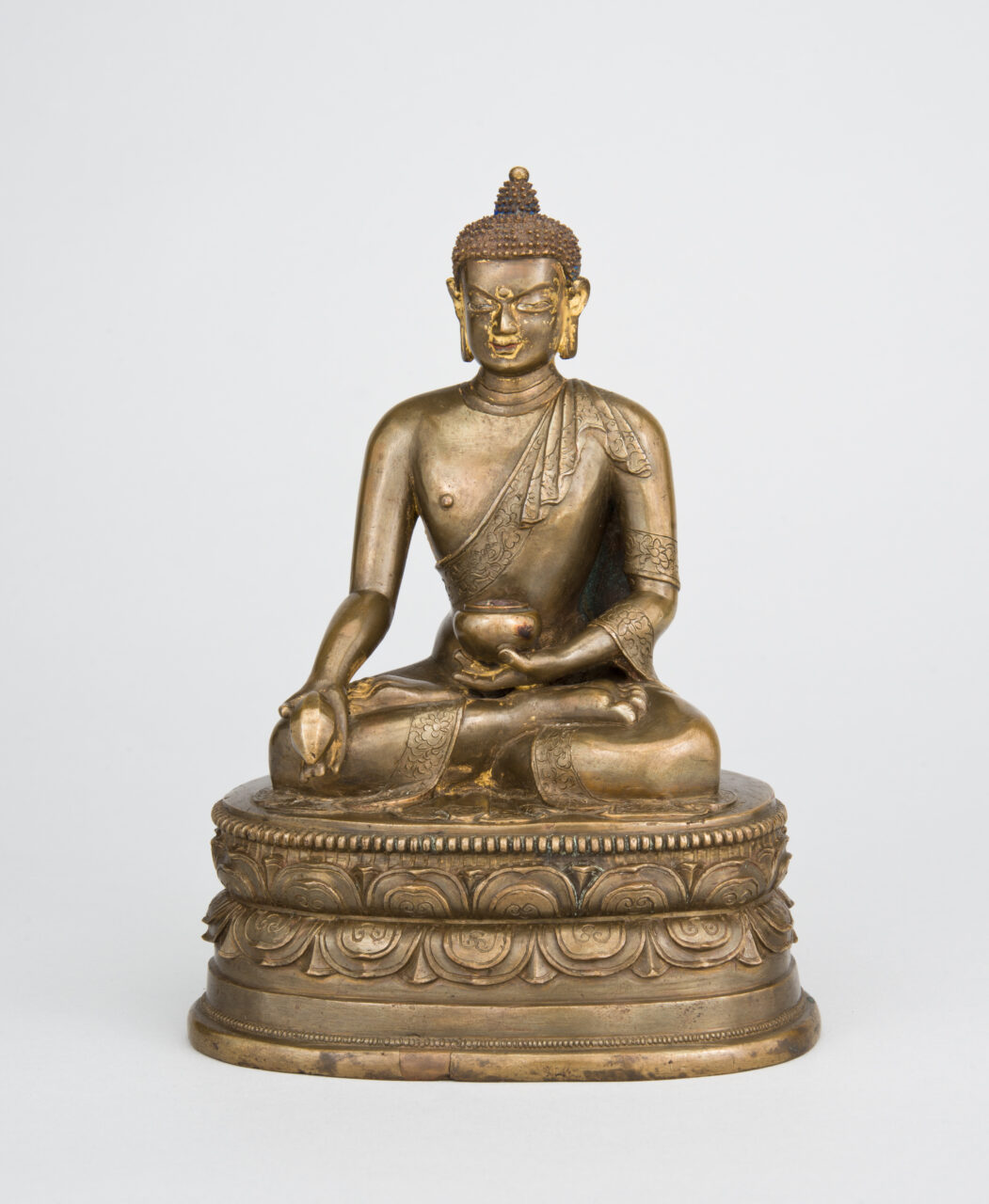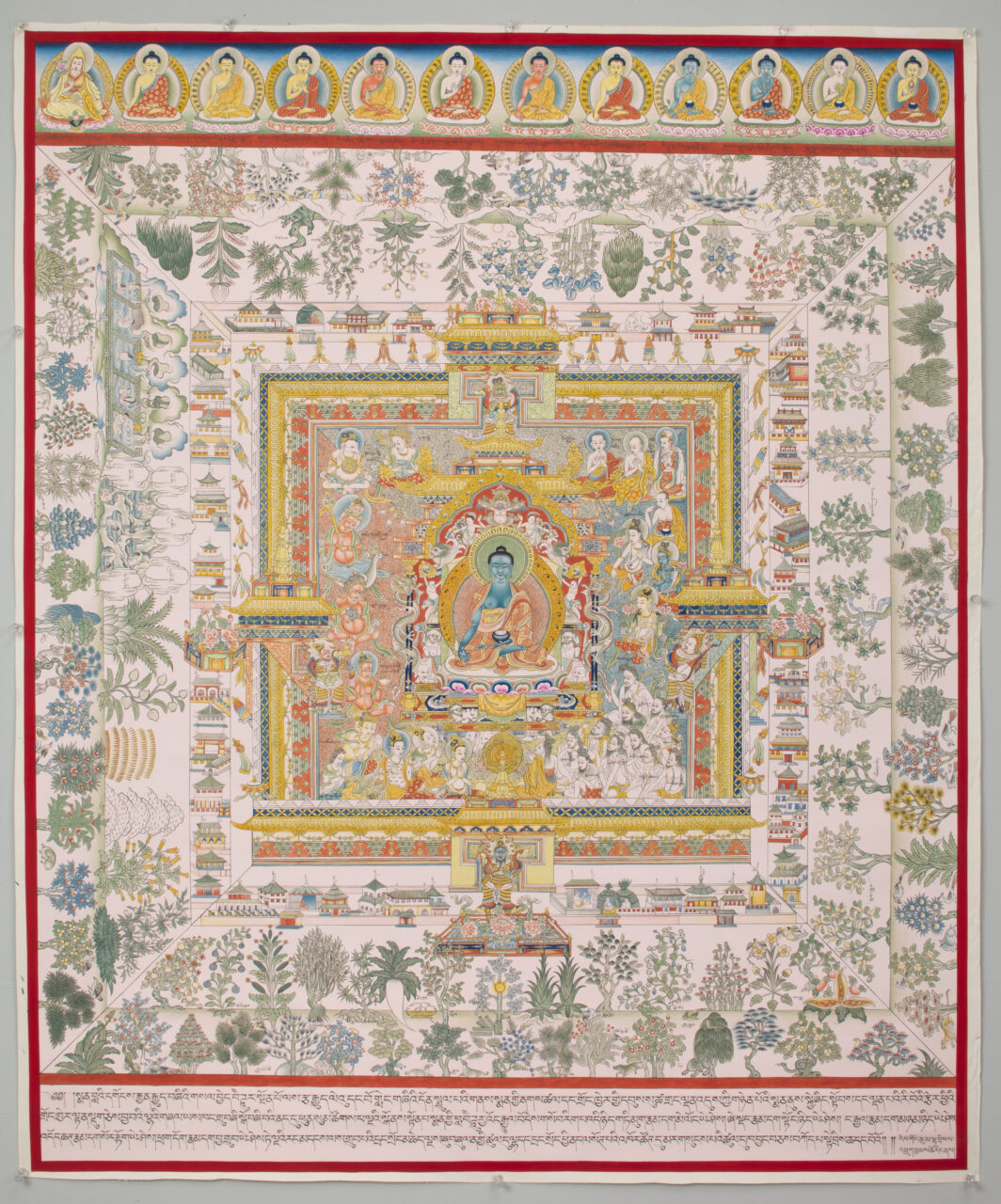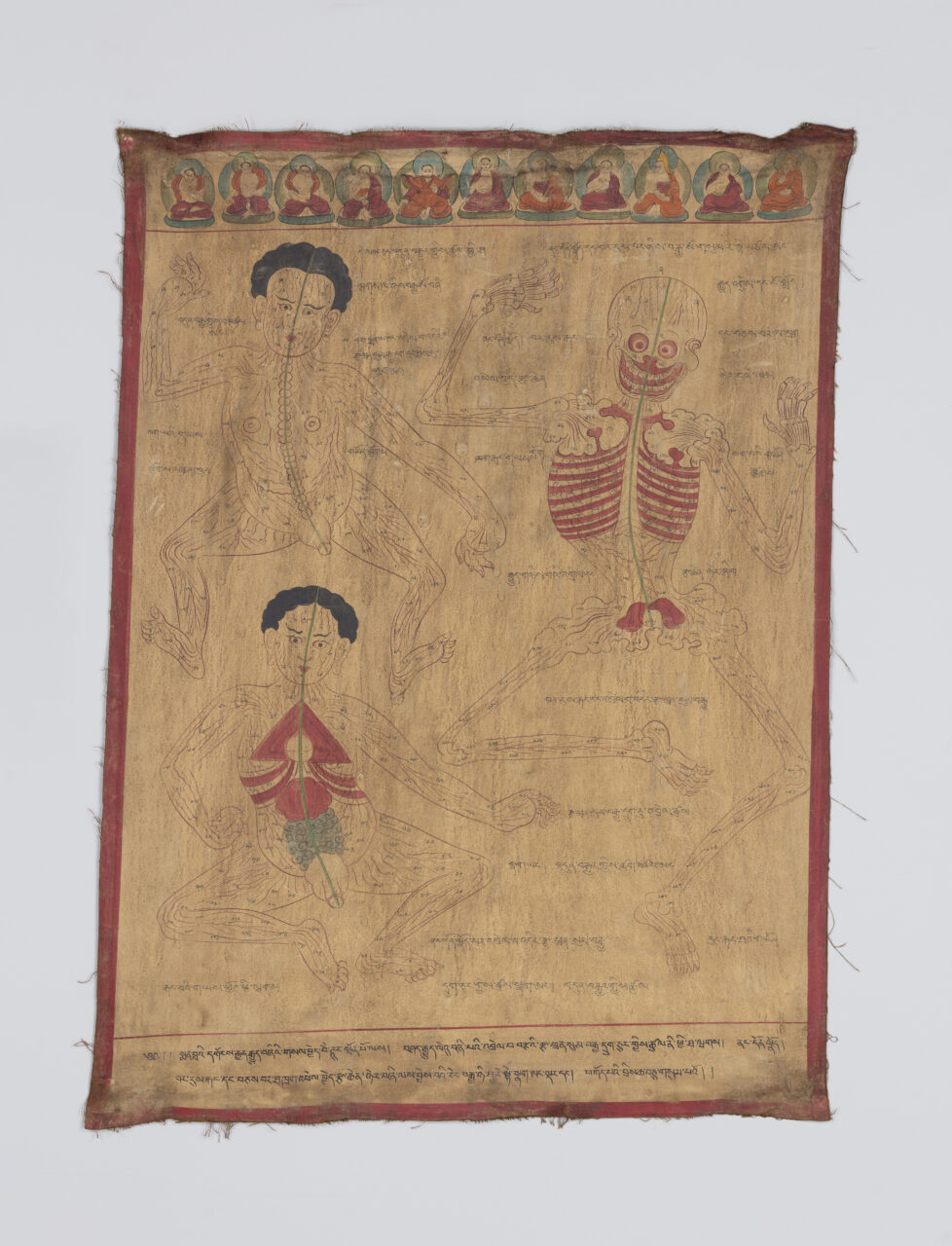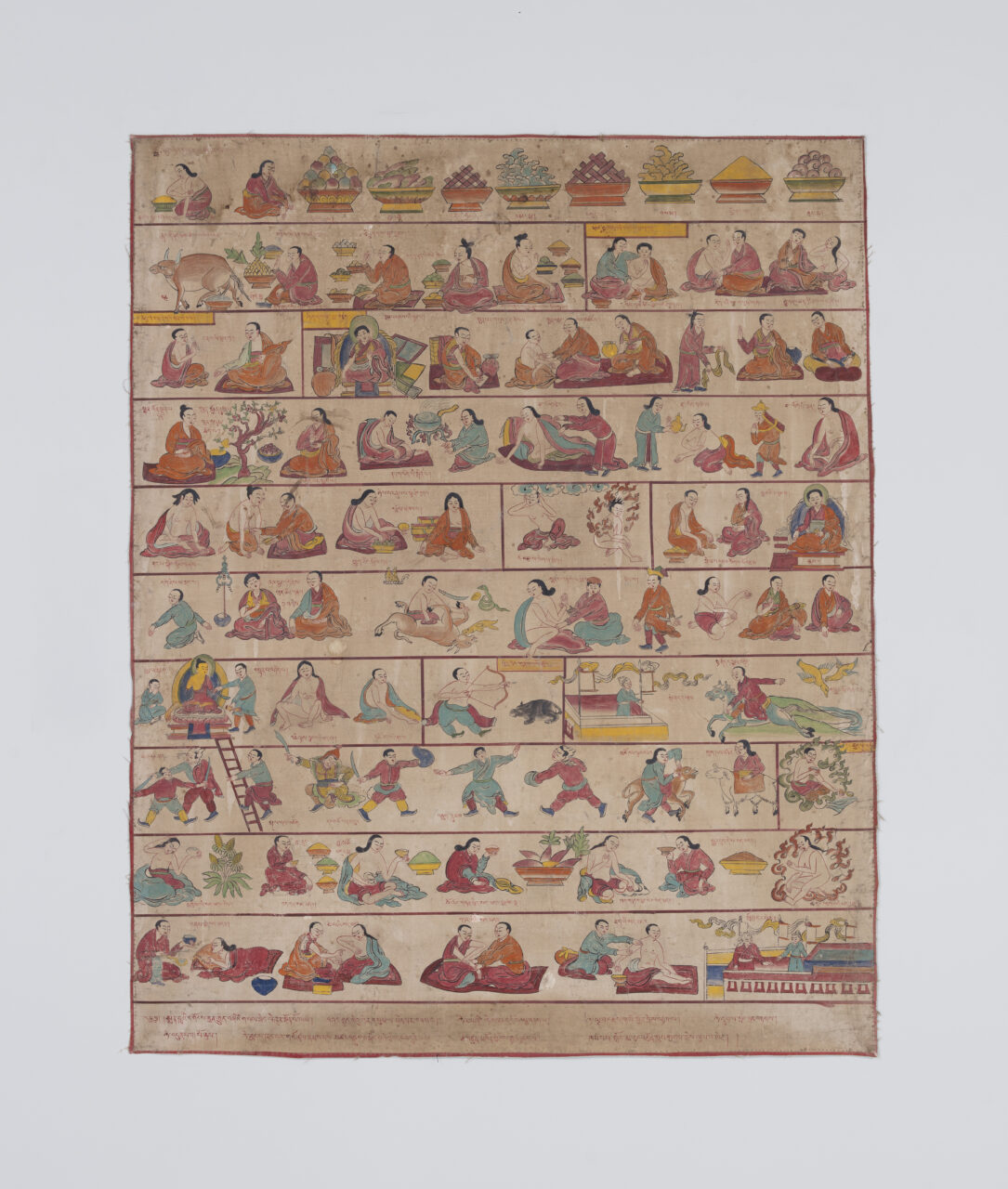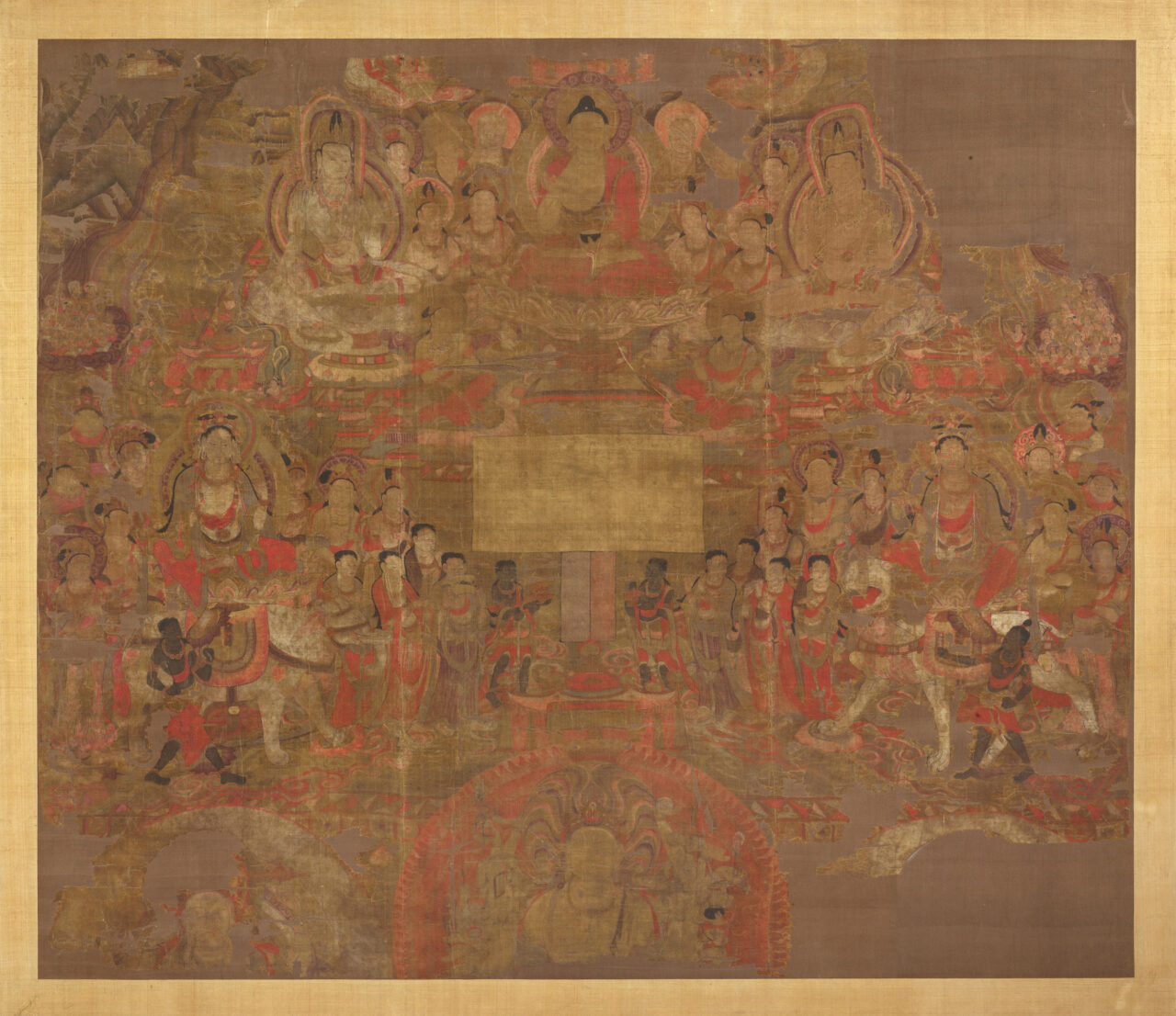Tibetan Medicine Permalink
Tibetan medicine, or the “Science or Art of Healing” (Tibetan: Sowa Rigpa), has been practiced throughout Himalayas and for centuries. Rooted in classical Indian Aryurvedic medicine, and incorporating elements of Chinese, Greco-Arabic, and indigenous medical knowledge. The Art of Healing reflects the Tibetans encounter with the cultural traditions around them, from the time of the height of the , and the introduction of Buddhism around the seventh century. This integration of the religious and has become a definitive characteristic of Tibetan medicine, and the triangular relationship of medicine, , and the visual arts has been essential to its development and transmission.
Tibetan medical practice is deeply connected to the Tibetan cultural worldview. The Tibetan term for health is troten, which translates as “to rely on what suits you,” indicates the wholistic approach to understanding an individual’s wellness and reliance on all available means to maintain balance of body, mind, and the environment. As such illness is not necessarily only related to the body’s internal workings but can also be seen as the influence of spirits. Tibetan doctors the patient by observation, interview, and taking pulse readings. Tibetan doctors perfected various kinds of treatments, such as modifying diet, prescribing compound medicines, and performing .
Further, Tibetan medical and Buddhist traditions posit that true well-being cannot be reached unless one attains enlightenment and is released from the cycle of rebirths (samsara). Medical treatment is thus seen as providing only a temporary sense of well-being, and Tibetans pursue different means to promote health, long life, and liberation from worldly suffering.
Key facts
- Three bodily forces (Tib. nyepas)—wind, bile, and phlegm—are intimately linked to an individual’s particular constitution, their natural and persistent dominance.
- They are broad concepts that encompass the physical, mental, and emotional characteristics of a person as well as temporary medical conditions.
- Illness is recognized as a result from physical injuries and the influences of spirits.
- Tibetan medical and astrological knowledge are linked and taught together.
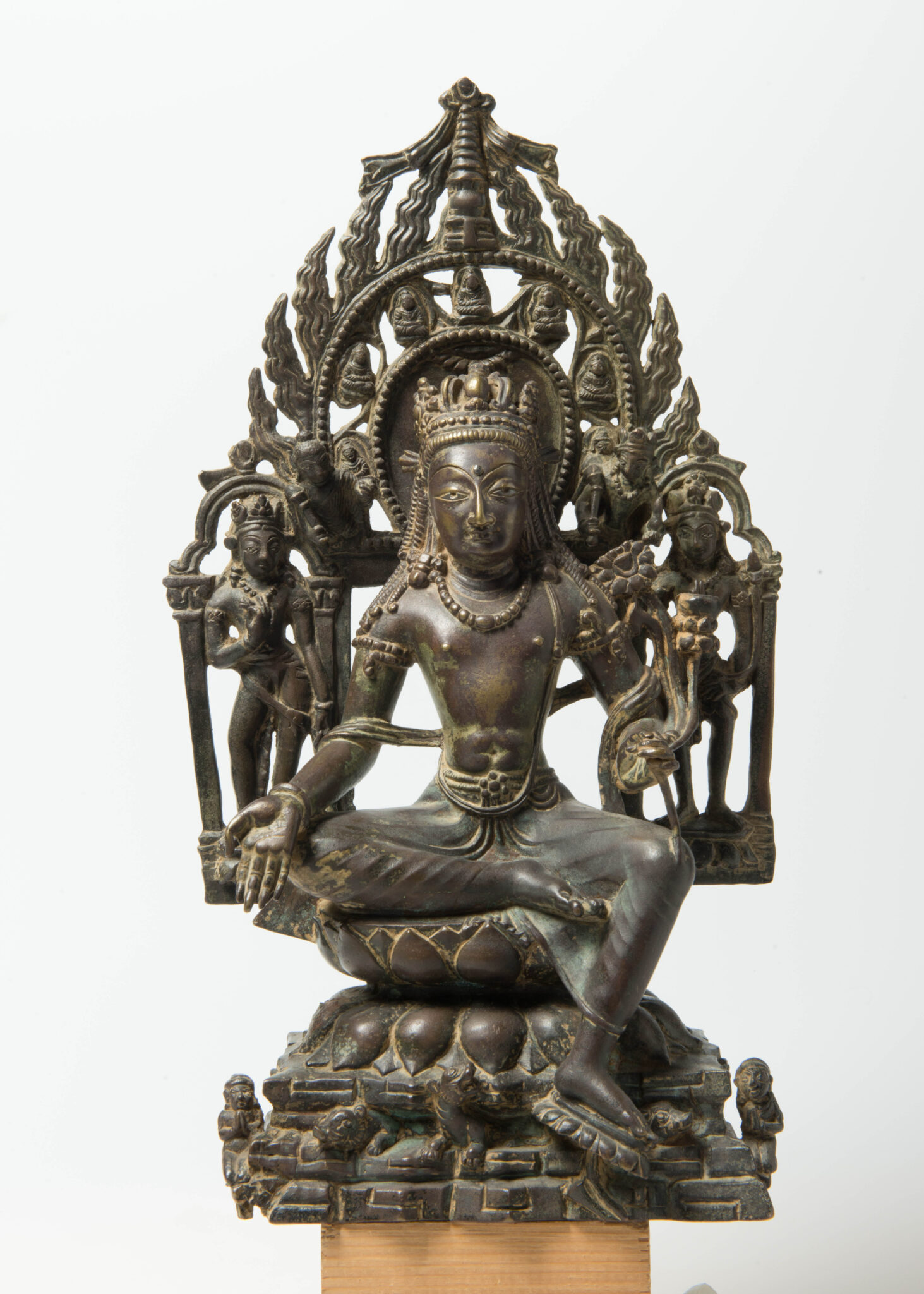
Bodhisattva Bhaishajyaraja; Swat Kingdom (present-day Swat District, Pakistan); 8th century; bronze with silver inlay; height 14 1/8 in. (36 cm); Museo delle Civiltà–Museo di Arte Orientale, Rome; accession no. 651; inv. no. 5810; photograph © Museo delle Civiltà – MAO “G. Tucci
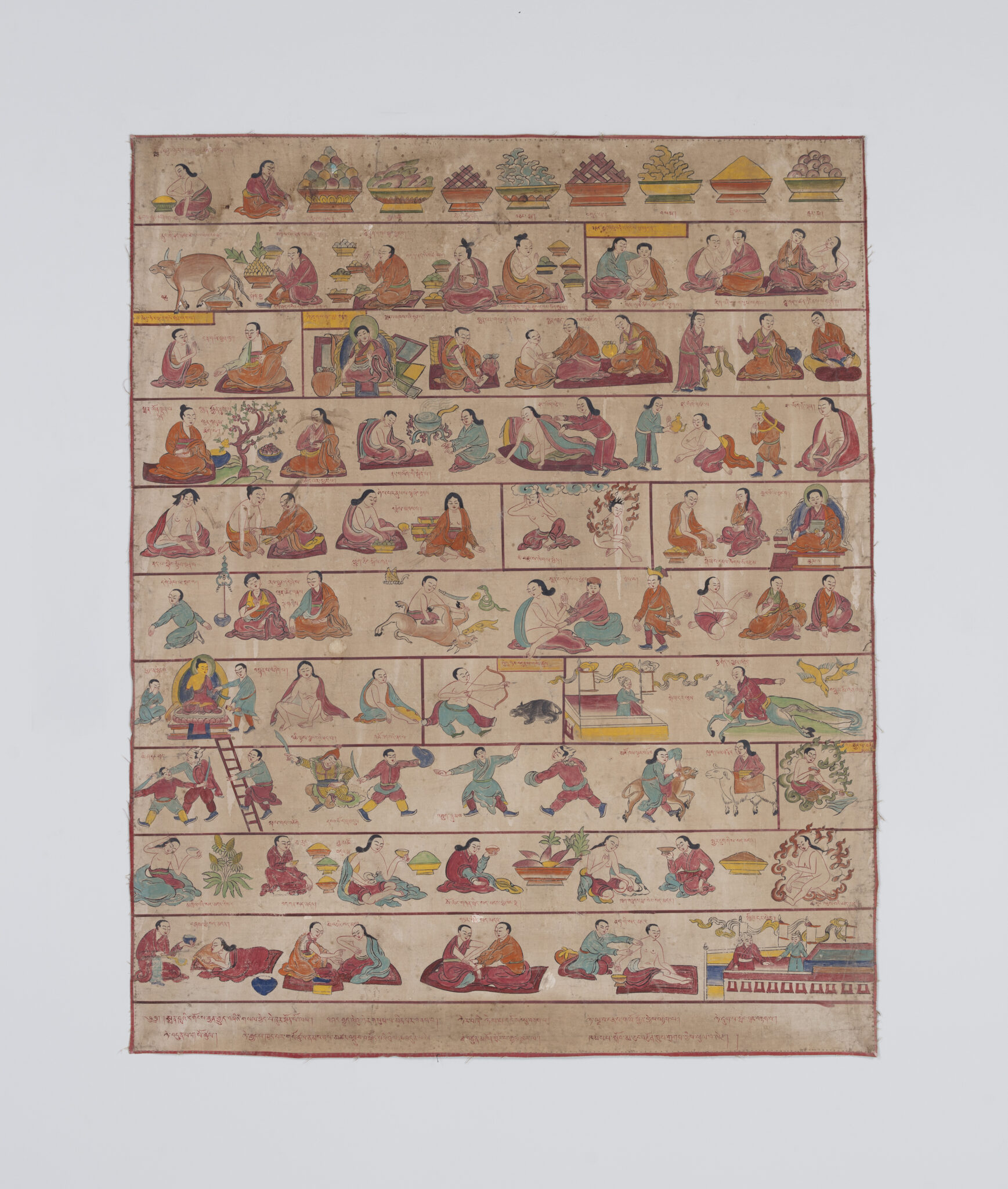
Medical painting on Prophylactics, Diagnosis, and Therapeutic Principles, illustration to the Medical treatise the Blue Beryl, chapters 23-28; Central Tibet; 19th century; Pigments on cloth; 32 3/4 × 26 1/2 in.; paintings; Rubin Museum of Art, Gift of Shelley and Donald Rubin; C2006.66.514.
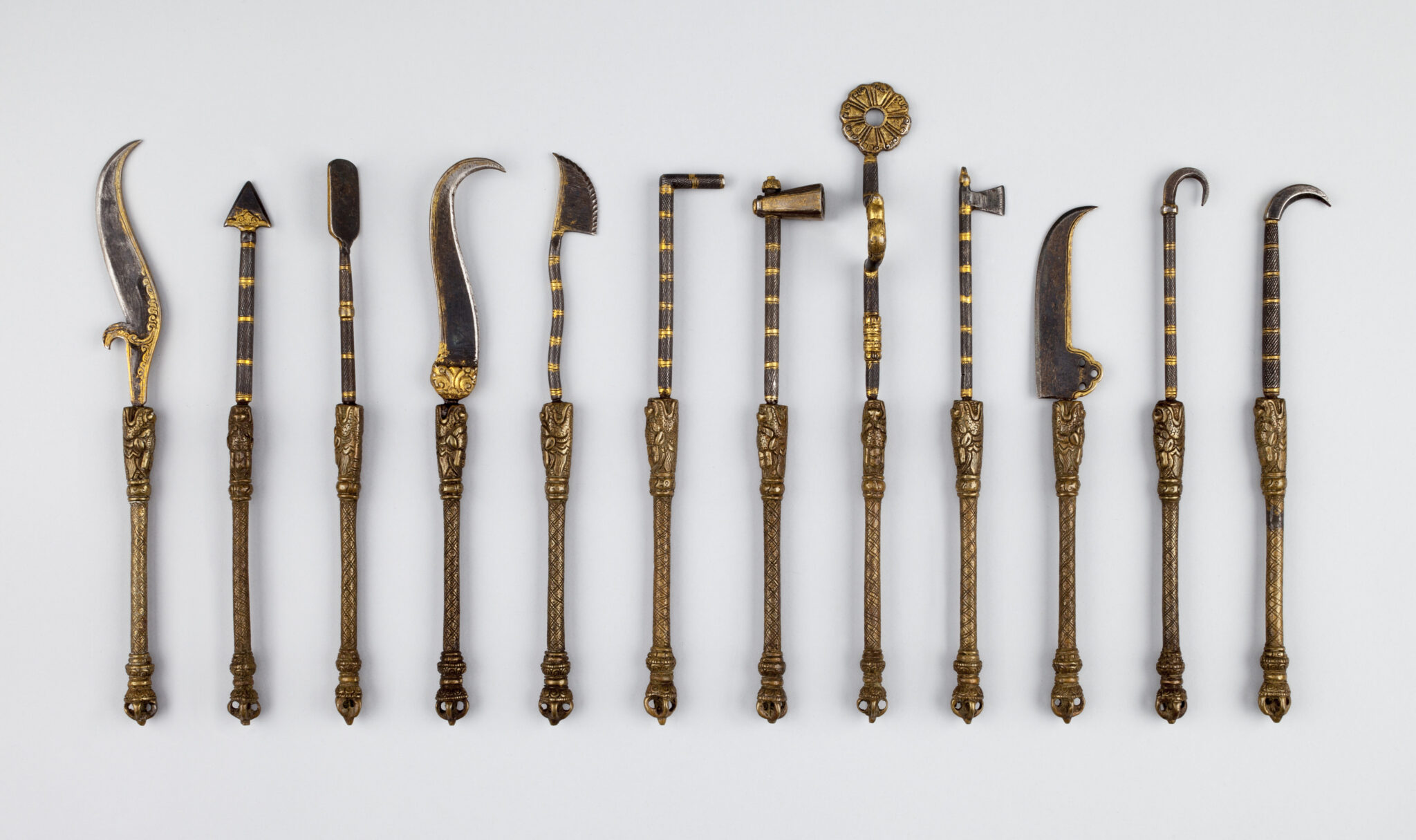
Medical Instruments; Tibet; date unknown; Metalwork; Rubin Museum of Art, Gift of Arnold Lieberman; C2002.7.4a-l (HAR 65092)
Tibetan Astrology Permalink
Across the globe, astrology and have played prominent roles in traditional decision making, for rulers and common folk alike. This need to understand the future has resulted in the development of intricate systems of prediction that not only make determinations about what is to come but also provide the tools to take the future into one’s own hands.
Tibetan divination is rooted in the traditions of India, Nepal, and China. It has three distinct branches: Indian astrology, which systematizes time and makes predictions according to the motion of the planets; martial conquest, which is of Nepalese Shivite origin; and Chinese elemental divination, based on the relationships formed by the five elements, twelve animal signs, eight trigrams, and nine numeric squares.
Key Facts
- Divination involves the intricate calculation of the effects of the five elements (wood, fire, earth, metal, and water).
- Predictions are not considered deterministic but rather cautionary and prescriptive.
- The subject has a chance to affect their future, so readings include the actions through which negative outcomes can be mitigated or averted.
- Astrology is used in complementing and implementing medical treatments.
- Some illnesses are associated with the activities of evil spirits, in which case a ritual solution is prescribed.
Systemizing Knowledge Permalink
Both medical and astrological sciences were systematized in the late seventeenth century by the regent of the Fifth , Desi Sanggye Gyatso (1653–1705). He also founded the Lhasa Medical and Astrological College (Mentsikhang) for the study and practice of these interdependent disciplines. He authored the medical Blue and astrological White Beryl treatises and commissioned illustrations for both. These paintings are examples of a tradition of Tibetan technical illustration that appears to have been established at that time.
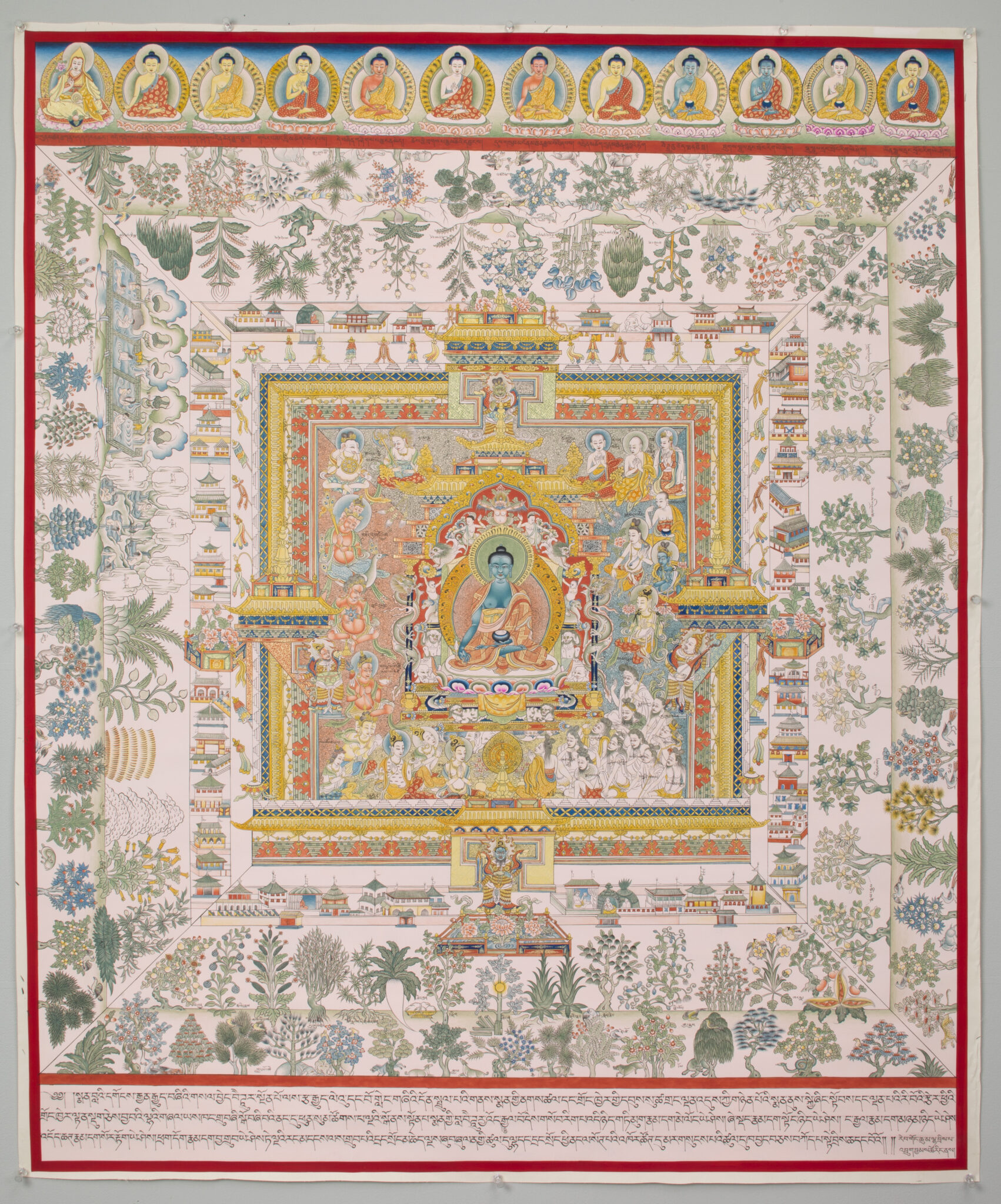
Medicine Buddha Palace (copy of first painting from the set of the Tibetan Medical Paintings from Mentsikhang Lhasa); Rebgong county, Qinghai Province, China; 2012–13; pigments on cloth; 74 3/4 × 58 1/4 × 2 in.; Rubin Museum of Himalayan Art; SC2013.6
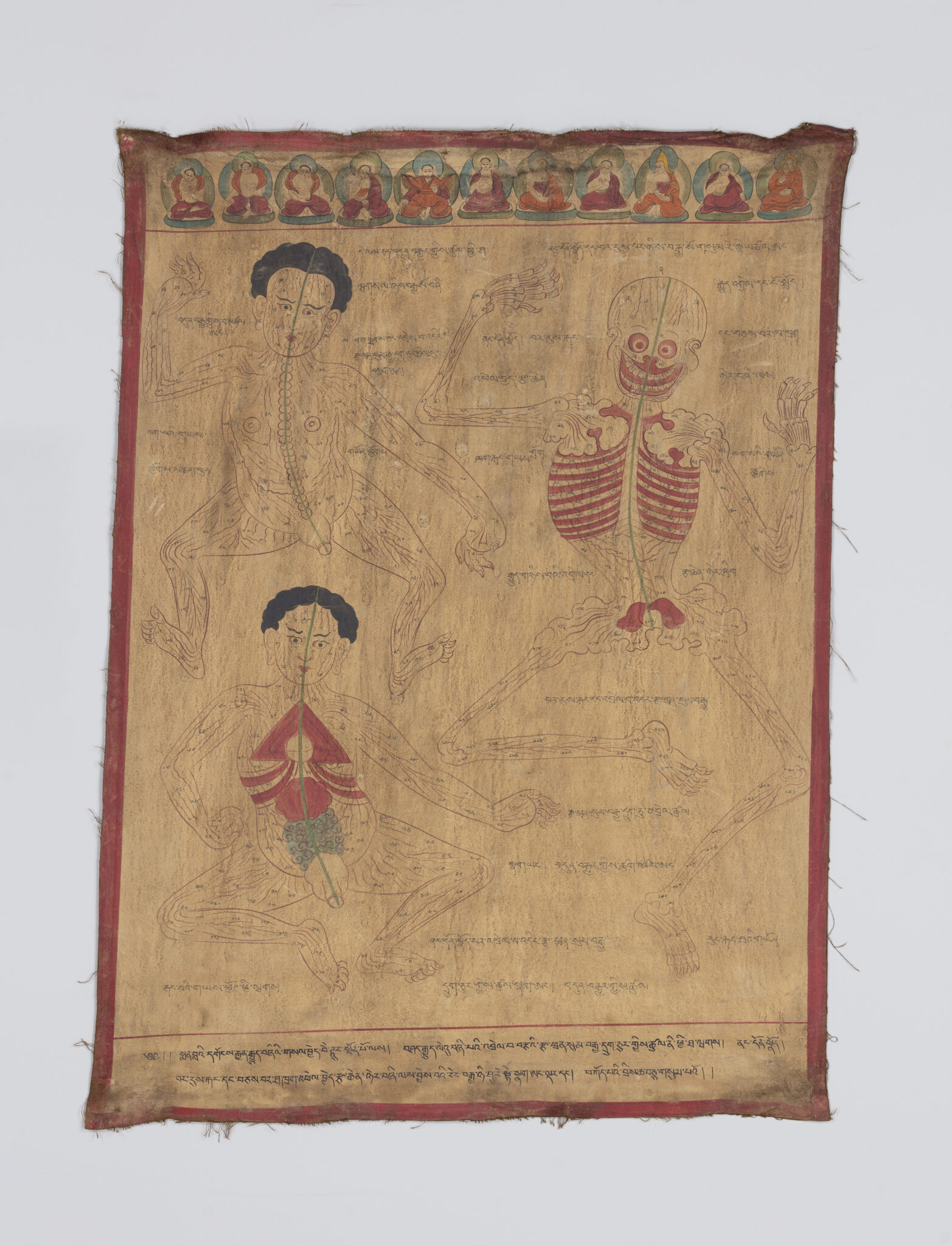
Medical painting of Minor Connecting Blood Vessels or Capillaries, illustration to the Medical treatise the Blue Beryl, chapter 4; Tibet; 18th century; Pigments on cloth; 28 1/4 × 21 1/8 in.; Rubin Museum of Art, Gift of Shelley and Donald Rubin; C2006.66.570 (HAR 1054)
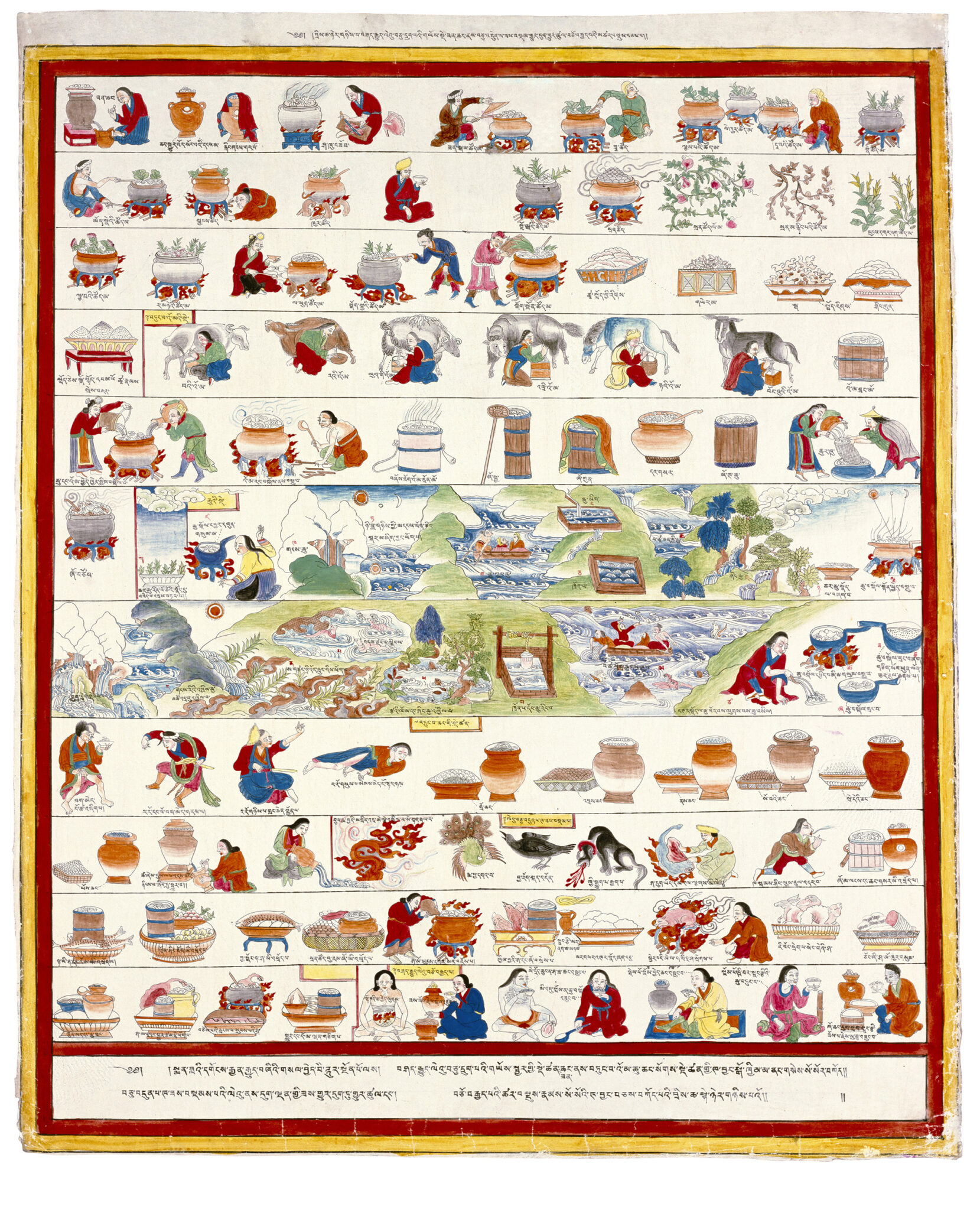
Dietetics, Painting 22 of the Tibetan Medical Paintings, Ulan Ude Set; Lhasa, central Tibet; early 20th century copy of original from ca. 1687–1697; pigments on cloth; 33-7/8 × 26¾ in. (86 × 68 cm); National Museum of the Republic of Buryatia, Ulan Ude; photograph courtesy Serindia
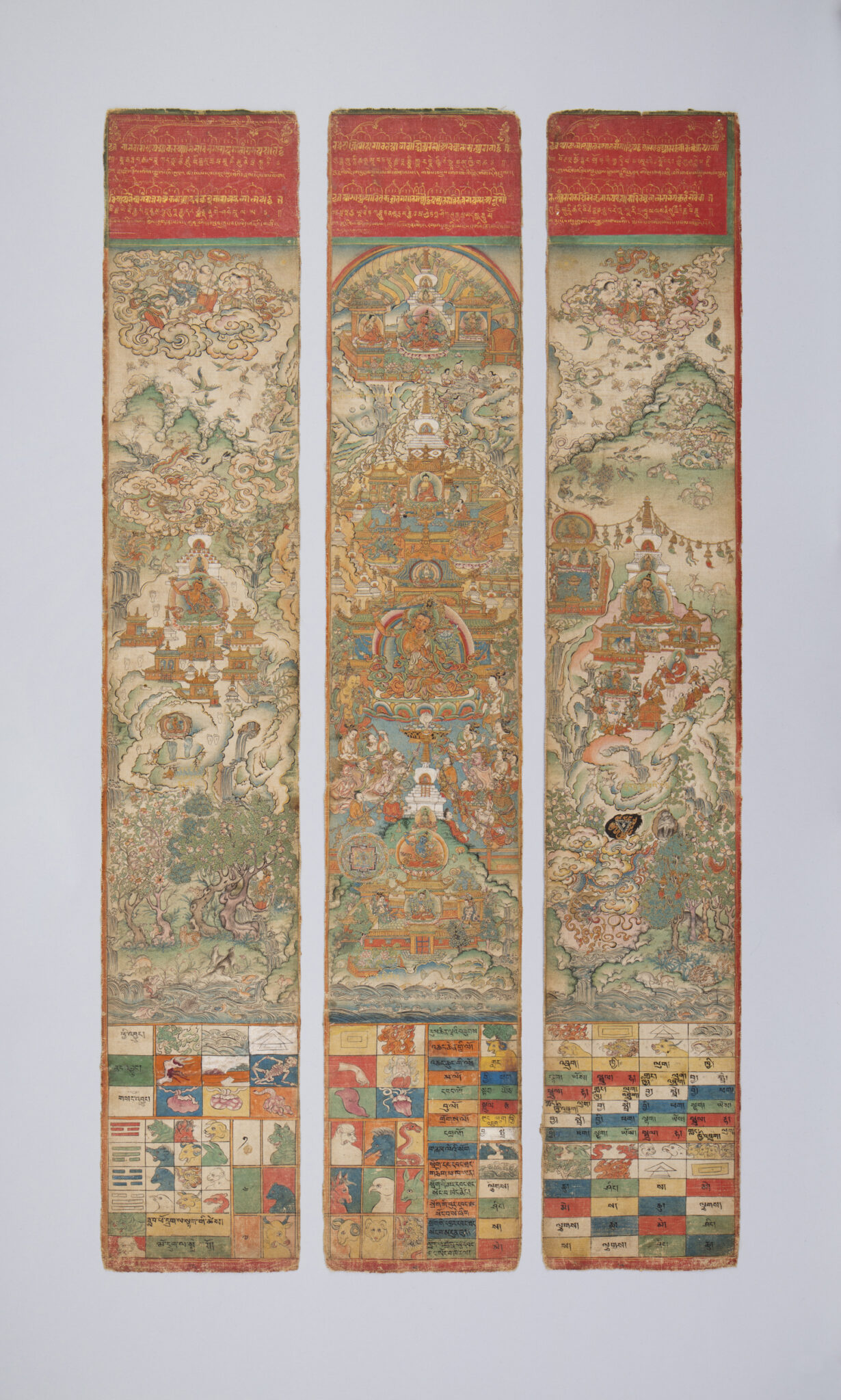
Sonam Peljor (act. 18th century); Detail of The White Beryl Illuminated Manuscript, illustrated edition of Sanggye Gyatso’s The White Beryl, with three folios showing Manjushri on Mount Wutai; Sakya Monastery, Tsang region, central Tibet; mid-18th century; pigments on cloth and lacquered wood covers; each 23 7/8 × 4¼ in. (60.7 × 10.8 cm); Rubin Museum of Art; C2015.7.1–59 (C2015.7.4–.6)
The aligned goals of both medicine and Buddhism in the prevention, alleviation, and eradication of suffering make them natural partners. The wholistic approach to understanding an individual’s wellbeing relates to emotional states of mind, the body’s internal condition, as well as external influences of the environment and must be considered together. Thus Tibetan medical and astrological knowledge are seen as linked, and taught and practiced jointly, usually within the context of the Buddhist worldview.
Related Project Himalayan Art Resources Permalink
Exhibition Content
Digital Resources Permalink
Glossary Terms Permalink
The Four Tantras are the fundamental text of the Tibetan medical tradition, claimed to have been taught by the Buddha himself. The first tantra or “root” tantra contains an overview of the medical system, while the second or “explanatory” gives more detail on theory and physiology. The third or “instructional” tantra gives information on treatments, while the fourth or “subsequent” tantra gives a variety of additional information on diagnosis, the preparation of medicines, and more.
In Mahayana Buddhism, Bhaishajyaraja or Bhaishajyaguru is an important buddha who is associated with medicine and healing. Bhaishajyaguru is the teacher who expounds the Tibetan Medical tantras (Tib. Gyu Zhi), which traditional medical doctors memorize to learn the theory and practice of medical science.
Eight Medicine Buddhas
The Eight Medicine Buddhas are an iconographic set of seven buddhas plus Shakyamuni, who are said to preside over healing and medicine in Tibetan Buddhism.
Lu is an ancient class of Tibetan exorcistic rituals in which one object is substituted for another. Often, negative forces affecting a person are enticed to enter an effigy (torma), which is then burned or discarded.
divination
Divination refers to any supernatural means of knowing the world, including oracles, astrology, and geomancy (the study of forces in the landscape).




